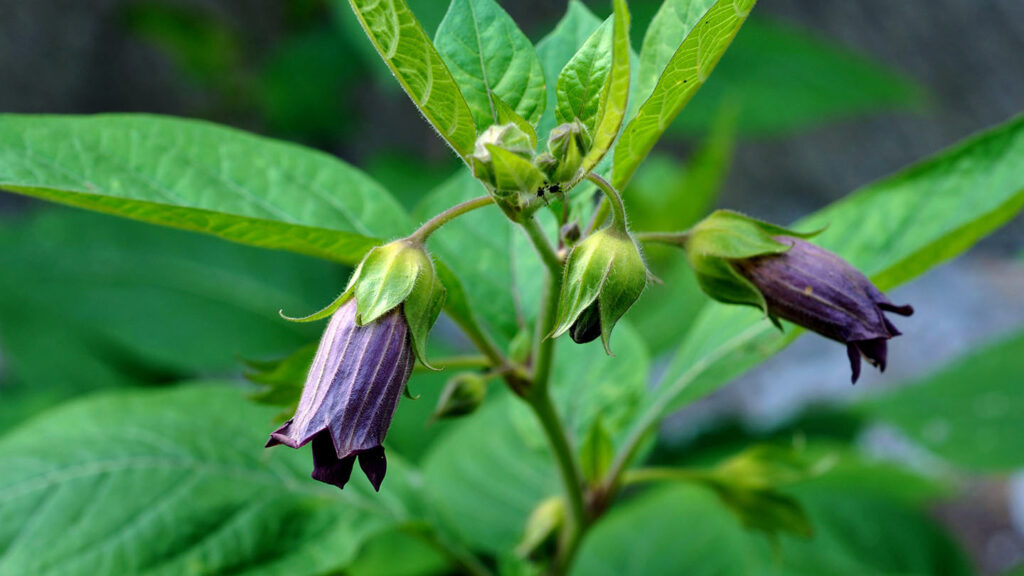5 Poisonous plants to spot on your next Woodland Walk

Spooky season is upon us! We all know that witches and warlocks use some interesting ingredients in their spells and potions, but did you know that you can find plants with some pretty magical properties all around us? While some are great medicines, there are a lot of poisonous plants out there. Keep an eye out for these five on your next Woodland Walk…

Deadly nightshade (Atropa belladonna)
Though its beautiful bell-shaped flowers may be very inviting, this perennial’s common name is well-earned. In small quantities its leaves and berries can produce hallucinogenic effects, affect your memory, and make it difficult to stand. Just a handful of berries may be enough to kill, with symptoms including a rash, confusion, and a high heart rate before inevitable death. Avoid it at all costs!

Hemlock (Conium maculatum)
Often mistaken for the similar looking wild carrot, fennel, and yarrow, hemlock is a hardy plant that can grow in a wide range of environments. Every part of the plant is toxic if ingested, but the seeds and roots are especially dangerous. Even in very small quantities hemlock can cause paralysis, respiratory failure, and explosive vomiting.

Satan’s bolete (Rubroboletus satanas)
Commonly found in broad-leaved woodlands like the ones at Markshall Estate, these fungi pop up between June and September across the UK. Easily spotted by their blood red stalks and pores, Satan’s bolete can cause horrific gastrointestinal problems if eaten. Poisoning cases are rare, partly due to its off-putting smell which is similar to that of rotting flesh – nasty!

Wolfsbane (Aconitum lycoctonum)
Its Latin name roughly translates to “wolf killer”, which should tell you just how dangerous this plant can be. Don’t let its pretty, drooping flowers fool you – coming into contact with wolfsbane can have some serious consequences. Just brushing up against it or smelling its flowers can cause a reaction, and if consumed it can fatally slow your heart.

Fly agaric (Amanita muscaria)
Instantly recognisable with its bright red cap and white spots, you might be surprised to learn that this mushroom has psychoactive and potentially deadly effects. Often consumed by mistake, some of the psychoactive agents found in its spores convert into a powerful neurotoxin shortly after ingestion. Fortunately modern medicine means that fatal poisonings are rare, with no provable cases reported in over 100 years. If you spot it in our Arboretum give it a wide berth!
Want to find out more about plants on the Estate?
For everything you need to know about the Arboretum, Woodland Walks and more, visit our Things to see and do pages and discover what lurks in the Lakes, where’s best to walk your four-legged pals, and where you can unwind in the Walled Garden.
Find out more
More from the blog
See more
-

Discovering the Diverse Habitats of Markshall: From Mighty Oaks to Hidden Bats and Graceful Deer
Markshall is a unique landscape that spans woodlands, gardens, and historic structures, each offering a vital refuge for an extraordinary […]
-

Update from William the New Markshall Senior Horticulturist:
Hello everyone! I’m excited to share some updates from my first month as the Senior Horticulturist at Markshall. It has […]
-

Meet Markshall’s Irises
The irises are currently in bloom, gracing the long herbaceous border of the Walled Gardens and the borders of the […]